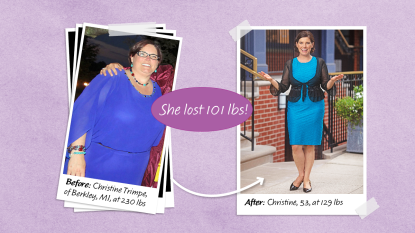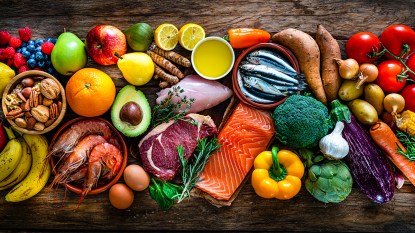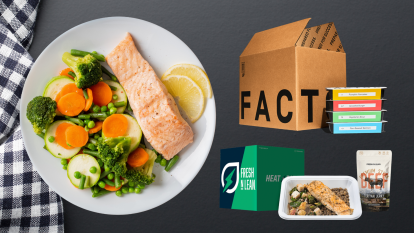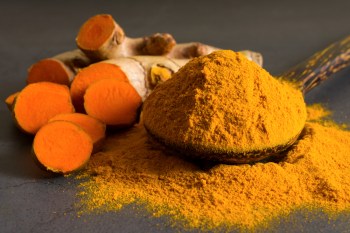The High-Carb Pritikin Diet Can Help You Lose Weight, Lower Your Cholesterol, and Reverse Heart Damage

We have good news for anyone who loves potatoes and is also looking for ways to lower their cholesterol: The Pritikin Diet might help you get the best of both those worlds.
The high-carb (yes, high carb!), low-fat diet has been around for decades, but has likely been forgotten with trendy low-carb and ketogenic diets taking over the spotlight. So, we took a closer look at the Pritikin diet to refresh everyone’s memory.
What is the Pritikin Diet?
The diet was developed by a man named Nathan Pritikin in an attempt to reverse his own heart disease diagnosis. At the time (the late 1950s,) patients were commonly advised to stop all exercise and focus on rest. Pritikin ignored that and instead became more active, while also changing his eating habits. Today, most of us know those are two of the biggest keys to keeping our hearts healthy, but it was a pretty revolutionary idea back then.
Over the next decade, Pritikin was able to slash his high cholesterol levels by more than half and regain normal heart function. He then shared his methods with the rest of the world, which we now know as the Pritikin Diet.
The main idea is to enjoy meals that are made up of 75 to 80 percent fiber-rich, complex carbohydrates, 10 to 15 percent lean protein, and less than 10 percent of fat.
What can you eat on the Pritikin Diet?
Food is broken down into three color categories in the Pritikin Diet: Green “go” foods, orange “caution” foods, and red “stop” foods.
Here’s examples of food listed on the Pritikin Longevity Center website:
Green Foods:
- Fruits
- Vegetables
- Whole grains (like whole-wheat bread, brown rice, whole-wheat pasta, and oatmeal)
- Starchy vegetables (like potatoes, corn, and yams)
- Legumes (like black beans, pinto beans, and garbanzo beans, peas, and lentils)
- Lean calcium-rich foods (like nonfat dairy milk, nonfat yogurt, and fortified soymilk)
- Fish and other lean sources of protein that are very low in saturated fat (like skinless white poultry, lean red meat like bison and venison, and plant sources of protein, such as legumes and soy-based foods like tofu and edamame)
Orange Foods:
- Non-hydrogenated oils (like safflower or avocado oil)
- Refined sweeteners (like sugar, corn syrup, and honey)
- Salt
- Refined grains (like white bread, white pasta, and white rice)
Red Foods:
- Saturated-fat-rich foods (like butter, coconut oil, fatty meats, dairy foods like cheese, cream, and whole/low-fat milk)
- Organ meats
- Processed meats (like hot dogs, bacon, and bologna)
- Partially hydrogenated vegetable oils
- Cholesterol-rich foods like egg yolks
Although they aren’t included in the list, the website also mentions that nuts and seeds — walnuts, flaxseeds, almonds, pumpkin seeds, pecans, pistachios, sunflower seeds, peanuts, cashews, and macadamia nuts — are fine as long as you keep it to less than one ounce per day.
Like most diets, it’s all about balance. For example, potatoes get the green light, but you’ll have to be careful and light-handed with the oil you use to cook them. That said, most dieticians will agree with the diet’s emphasis on whole, non-processed foods.
The Journal of the American Medical Association notes that although it is a fairly strict regimen, which might make it difficult to maintain in the long-run, it can result in reduced cholesterol by significantly limiting the amount being eaten.
Of course, boosting heart health is not just about what you eat, but making sure to stay active. With that in mind, the Pritikin Diet recommends getting in at least 30 to 90 minutes of aerobic cardio six days a week (walking, dancing, jogging, or anything that will get your heart rate up), strength training for 20 minutes two to three times a week, and stretching for 10 minutes a day, holding each stretch for 10 to 30 seconds.
If this all sounds like something you can get behind, remember that it is also important to talk with your doctor before adopting a new diet plan – especially if you have existing issues with cholesterol or other cardiac conditions.
Here’s hoping we can all keep our hearts healthy and strong!













